 Tarawa
Tarawa

On November 20, 1943, Marines landed on the tiny Betio island, in the Tarawa Atoll.  Rear Admiral Keijo Shibasak boasted that a million men couldn't take the island in a thousand
Rear Admiral Keijo Shibasak boasted that a million men couldn't take the island in a thousand .jpg) years. It was taken in four days. Tarawa was heavily defended, where Marines encountered
years. It was taken in four days. Tarawa was heavily defended, where Marines encountered  heavily losses on the beaches. Over 1,000 Americans were killed, which outraged people back
heavily losses on the beaches. Over 1,000 Americans were killed, which outraged people back in the states, because it was such a high loss for a seemingly insignificant tiny island. Poor
in the states, because it was such a high loss for a seemingly insignificant tiny island. Poor  intelligence is credited to the landing craft being stuck in the water and the beach, but at least
intelligence is credited to the landing craft being stuck in the water and the beach, but at least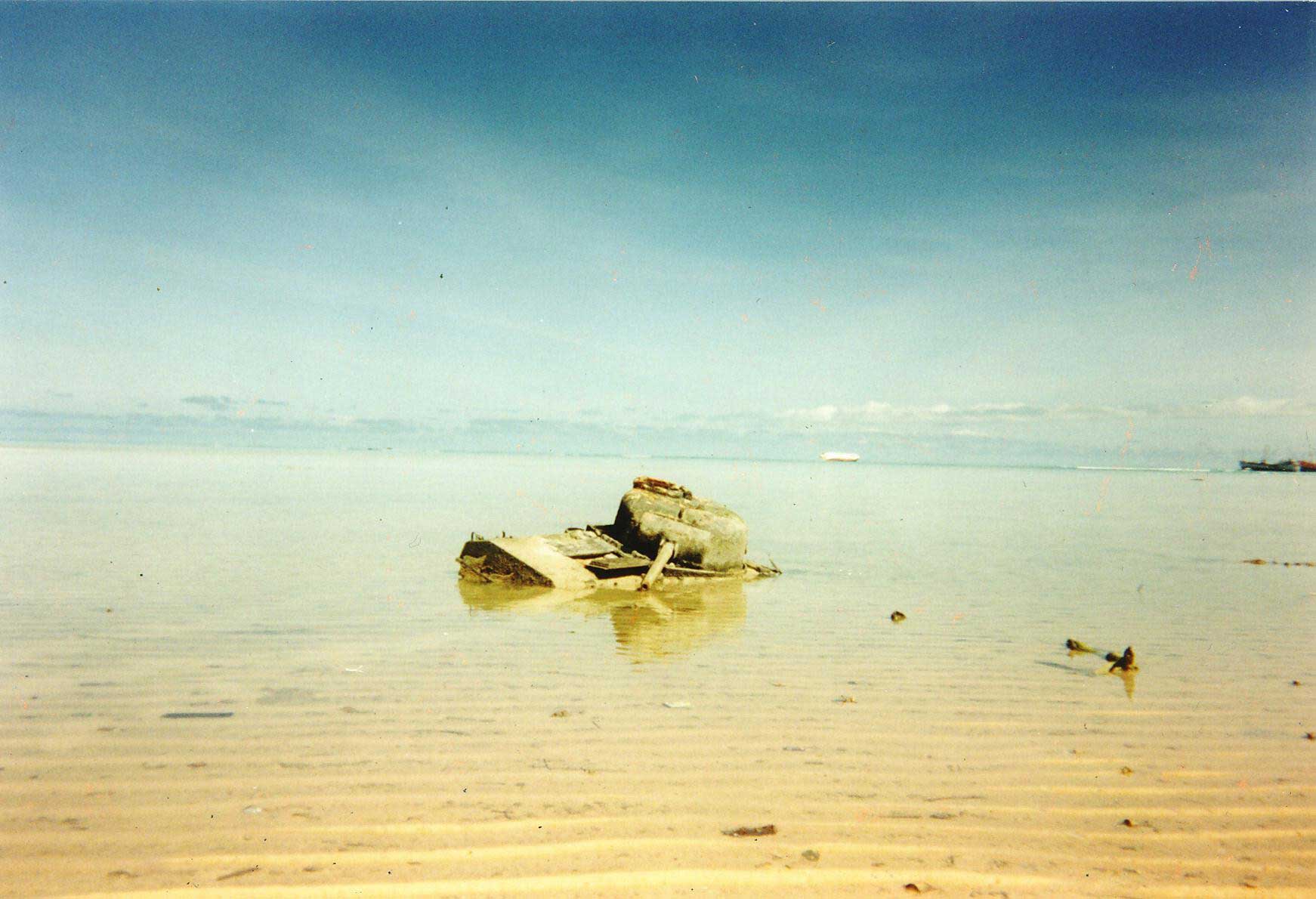 these lessons would be learned, and refined in future amphibious landing battles. Out of about
these lessons would be learned, and refined in future amphibious landing battles. Out of about 5,000 Japanese, only 146 were alive, mostly Korean slave laborers, the Japanese organized
5,000 Japanese, only 146 were alive, mostly Korean slave laborers, the Japanese organized their Betio defenses for an all-around, decisive struggle to keep United States forces from reaching the beaches .
their Betio defenses for an all-around, decisive struggle to keep United States forces from reaching the beaches . ![[Figure 18. Betio Island]](http://www.lonesentry.com/articles/jp-betio-island/betio-island-map-tarawa.jpg) A map, drawn to scale, is designed to show an over-all picture of the enemy defensive setup. The insets show important areas in detail.
A map, drawn to scale, is designed to show an over-all picture of the enemy defensive setup. The insets show important areas in detail.
The Japanese beach defenses consisted of well-emplaced and well-sited weapons, various types of obstacles, and mines. The weapons included grenades, mortars, rifles, light and
types of obstacles, and mines. The weapons included grenades, mortars, rifles, light and heavy machine guns, 13-mm dual-purpose machine guns,37-mm guns, 70-mm infantry guns
heavy machine guns, 13-mm dual-purpose machine guns,37-mm guns, 70-mm infantry guns
 , 75-mm mountain guns (Model 41), 75-mmdual-purpose guns (Model 88), 80-mm antipode
, 75-mm mountain guns (Model 41), 75-mmdual-purpose guns (Model 88), 80-mm antipode guns, 127-mm twin-mount, dual-purpose guns, 140-mm coast-defense guns, and 8-inch coast-defense guns.
guns, 127-mm twin-mount, dual-purpose guns, 140-mm coast-defense guns, and 8-inch coast-defense guns.
The obstacles included pyramid-shaped, reinforced concrete obstacles, which were placed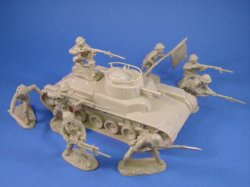 about halfway around the island on
about halfway around the island on the coral reef; an antiboat barricade, made of coconut-palm logs:
the coral reef; an antiboat barricade, made of coconut-palm logs: double-apron barbed wire; a perimeter barricade, constructed chiefly of coconut-palm logs;
double-apron barbed wire; a perimeter barricade, constructed chiefly of coconut-palm logs; and antitank ditches, dug a short distance back of the perimeter barricade.
and antitank ditches, dug a short distance back of the perimeter barricade.
Antipersonnel and antiboat mines were laid on the fringing reef—frequently between the concrete obstacles—and on the beaches.
concrete obstacles—and on the beaches.
Giving a lecture today to some people on Patriotism I said that there would be no possible way that I'd get killed for it the reason being that if David Cameron handed me a rifle my reply would be "Yes Sir I'll be right behind you". Only one son of the American senators took part in front line action in the Gulf War so hey fuck you Mr Poltician but I've got a life to lead, beers to drink, women to meet and the whole ca-bang, you go first I'll follow up. That way you'll never have to go to war. Most politicians are in B.Company, b here when you go and be here when you get back , if you get back. Nevertheless I like the history of war , everything is in it. This is about the Marines.
hey fuck you Mr Poltician but I've got a life to lead, beers to drink, women to meet and the whole ca-bang, you go first I'll follow up. That way you'll never have to go to war. Most politicians are in B.Company, b here when you go and be here when you get back , if you get back. Nevertheless I like the history of war , everything is in it. This is about the Marines.![[linked image]](http://i646.photobucket.com/albums/uu181/hurricanebuild/S7303180.jpg) The New Georgia group of islands was about one hundred miles north of Guadalcanal. The five large islands were originally bypassed by the Japanese in favor of skipping to Guadalcanal, but as the American
The New Georgia group of islands was about one hundred miles north of Guadalcanal. The five large islands were originally bypassed by the Japanese in favor of skipping to Guadalcanal, but as the American  Marines garrisoned the captured Henderson Field,
Marines garrisoned the captured Henderson Field,  the strategy was revised as more land-based planes were needed to strike Guadalcanal. On 24 Nov 1942 a large Japanese convoy sailed for a small clearing on the western side of New Georgia island
the strategy was revised as more land-based planes were needed to strike Guadalcanal. On 24 Nov 1942 a large Japanese convoy sailed for a small clearing on the western side of New Georgia island , currently used by a small coconut plantation. Although the convoy attracted American attention as early as 28 Nov, American intelligence saw nothing there based on aerial photographs besides a few scattered
, currently used by a small coconut plantation. Although the convoy attracted American attention as early as 28 Nov, American intelligence saw nothing there based on aerial photographs besides a few scattered  small buildings. Finally, on 3 Dec, a sharp-eyed American intelligence expert saw something: the Japanese were building an airfield underneath the neat rows of coconut trees. Whenever a tree needed to be
small buildings. Finally, on 3 Dec, a sharp-eyed American intelligence expert saw something: the Japanese were building an airfield underneath the neat rows of coconut trees. Whenever a tree needed to be  uprooted, overhead wires were laid and dressed with leaves so that the appearance of a tree was maintained in the same location. On 6 Dec, American aircraft from Henderson Field paid a low-level visit to the location and confirmed the existence of the airfield after strafing at the Japanese engineers and troops there.
uprooted, overhead wires were laid and dressed with leaves so that the appearance of a tree was maintained in the same location. On 6 Dec, American aircraft from Henderson Field paid a low-level visit to the location and confirmed the existence of the airfield after strafing at the Japanese engineers and troops there. On 9 Dec, the first major operation against the newly constructed Munda Field was mounted. 18 B-17 bombers began a series of raids by various types of aircraft on Munda. On 13 Dec PBY Catalina aircraft began their occasional night time bombings.
On 9 Dec, the first major operation against the newly constructed Munda Field was mounted. 18 B-17 bombers began a series of raids by various types of aircraft on Munda. On 13 Dec PBY Catalina aircraft began their occasional night time bombings. On 4 Jan 1943, while US Army infantry were advancing on Guadalcanal on a planned offensive, Halsey sent a fleet to bombard Munda Field to divert any aerial reinforcement that might be sent to disrupt the Army offensive. The
On 4 Jan 1943, while US Army infantry were advancing on Guadalcanal on a planned offensive, Halsey sent a fleet to bombard Munda Field to divert any aerial reinforcement that might be sent to disrupt the Army offensive. The  bombardment force consisted of three light cruisers and two destroyers under the command of Rear Admiral Walden Ainsworth; the support group behind them had three light cruisers, one heavy cruiser, and three
bombardment force consisted of three light cruisers and two destroyers under the command of Rear Admiral Walden Ainsworth; the support group behind them had three light cruisers, one heavy cruiser, and three  destroyers under the command of Rear Admiral Mahlon Tisdale. Shortly after 0100 in the early morning of 5 Jan, the bombardment commenced. For the next 50 minutes they had deposited nearly 3,000 rounds of 6-in shells and 1,400 rounds of 5-in shells on the Japanese airfield. The next morning, American
destroyers under the command of Rear Admiral Mahlon Tisdale. Shortly after 0100 in the early morning of 5 Jan, the bombardment commenced. For the next 50 minutes they had deposited nearly 3,000 rounds of 6-in shells and 1,400 rounds of 5-in shells on the Japanese airfield. The next morning, American  reconnaissance aircraft visited Munda Field and reported a heavily damaged airfield and no sign of enemy anti-aircraft fire. A retaliatory strike by air came as the ships were steaming home, but it only damaged one of the
reconnaissance aircraft visited Munda Field and reported a heavily damaged airfield and no sign of enemy anti-aircraft fire. A retaliatory strike by air came as the ships were steaming home, but it only damaged one of the  turrets atop the New Zealand destroyer Achilles that sailed with the support group.
turrets atop the New Zealand destroyer Achilles that sailed with the support group. Munda Field was not the only airfield the Japanese constructed in the New Georgia island group. Another field, Vila, was built on the southern tip of Kolombangara. In the evening of 23 Jan, Ainsworth made another trip up the slot to New Georgia. At 0200 on 24 Jan, his bombardment group consisted of two light cruisers and four destroyers began firing. In the following hour the two light cruisers nearly sent 2,000
Munda Field was not the only airfield the Japanese constructed in the New Georgia island group. Another field, Vila, was built on the southern tip of Kolombangara. In the evening of 23 Jan, Ainsworth made another trip up the slot to New Georgia. At 0200 on 24 Jan, his bombardment group consisted of two light cruisers and four destroyers began firing. In the following hour the two light cruisers nearly sent 2,000  rounds of 6-in shells at the direction of the airfield, and the destroyers added 1,500 rounds of 5-in. A few return fires came from coastal batteries, but they were generally ineffective. The Japanese then tried to defend from the air, but a convenient squall together with radar-directed anti-aircraft gunnery saved the American ships.
rounds of 6-in shells at the direction of the airfield, and the destroyers added 1,500 rounds of 5-in. A few return fires came from coastal batteries, but they were generally ineffective. The Japanese then tried to defend from the air, but a convenient squall together with radar-directed anti-aircraft gunnery saved the American ships. After day break on 24 Jan, 24 SBDs, 17 TBFs, and 18 F4Fs took off from Henderson Field to follow up on the attack. The American aircraft dropped 23 tons of bombs on Vila by 0800.
After day break on 24 Jan, 24 SBDs, 17 TBFs, and 18 F4Fs took off from Henderson Field to follow up on the attack. The American aircraft dropped 23 tons of bombs on Vila by 0800. Although the "Ainsworth Express" runs, augmented with aerial bombardments, were effective in damaging the Japanese airfields, overall the Japanese engineers were as capable in repairing damaged airfields as
Although the "Ainsworth Express" runs, augmented with aerial bombardments, were effective in damaging the Japanese airfields, overall the Japanese engineers were as capable in repairing damaged airfields as  the American Marine engineers were with Henderson. The attacks achieved short term objectives by disrupting Japanese capabilities to launch land-based aircraft, but in the long run Halsey knew that the
the American Marine engineers were with Henderson. The attacks achieved short term objectives by disrupting Japanese capabilities to launch land-based aircraft, but in the long run Halsey knew that the  only way he could halt the operations from these new fields was to take them from the Japanese. That was something he was not ready to do, yet.
only way he could halt the operations from these new fields was to take them from the Japanese. That was something he was not ready to do, yet.
 The Apachean tribes were historically very powerful, opposing the Spanish and Mexican peoples for centuries.
The Apachean tribes were historically very powerful, opposing the Spanish and Mexican peoples for centuries.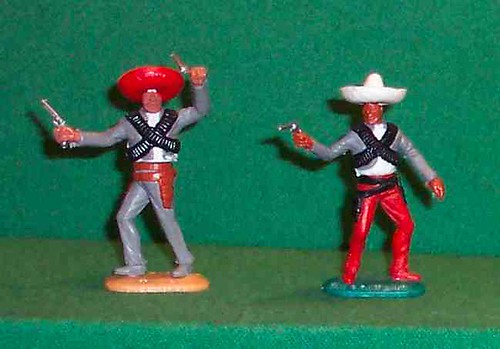 The first Apache raids on Sonora
The first Apache raids on Sonora 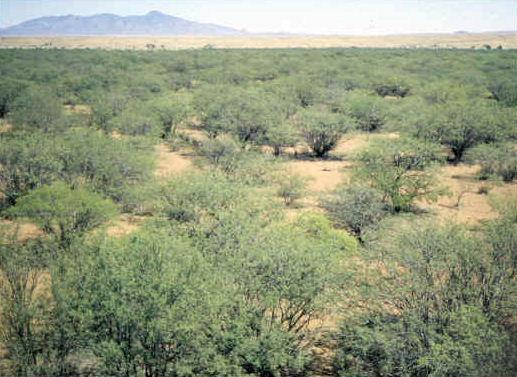 appear to have taken place during the late 17th century. In 19th-century confrontations, the U.S. Army found the Apache to be fierce warriors and skillful strategists
appear to have taken place during the late 17th century. In 19th-century confrontations, the U.S. Army found the Apache to be fierce warriors and skillful strategists
By 1835 Mexico had placed a bounty on Apache scalps but certain villages were still trading with some  bands. When Juan José Compas, the leader of the Mimbreño Apaches, was killed for bounty money in 1837, Mangas Coloradas
bands. When Juan José Compas, the leader of the Mimbreño Apaches, was killed for bounty money in 1837, Mangas Coloradas  or Dasoda-hae (Red Sleeves) became the principal chief and war leader. He conducted a series of retaliatory raids against the Mexicans.
or Dasoda-hae (Red Sleeves) became the principal chief and war leader. He conducted a series of retaliatory raids against the Mexicans.
When the United States went to war against Mexico in 1846, many Apache bands promised U.S. soldiers safe passage through their lands. When the U.S. claimed former territories of Mexico in 1846, Mangas  Coloradas signed a peace treaty with the nation, respecting them as conquerors of the Mexicans' land. An uneasy peace (a centuries-old tradition) between the Apache and the new citizens of the United States held until the 1850s. An influx of gold miners into the Santa Rita Mountains
Coloradas signed a peace treaty with the nation, respecting them as conquerors of the Mexicans' land. An uneasy peace (a centuries-old tradition) between the Apache and the new citizens of the United States held until the 1850s. An influx of gold miners into the Santa Rita Mountains led to conflict with the Apache. This period is sometimes called the Apache Wars.
led to conflict with the Apache. This period is sometimes called the Apache Wars. The United States' concept of a reservation had not been used by the Spanish, Mexicans or other Apache neighbors before. Reservations were often badly managed, and bands that had no kinship relationships  were forced to live together. No fences existed to keep people in or out. It was not uncommon for a band to be given permission to leave for a short period of time. Other times a band would leave without
were forced to live together. No fences existed to keep people in or out. It was not uncommon for a band to be given permission to leave for a short period of time. Other times a band would leave without  permission, to raid, return to their homeland to forage, or to simply get away. The military usually had forts nearby. Their job was keeping the various bands on the reservations by finding and returning those who left. The reservation policies of the United States produced conflict and war with the various Apache bands who left the reservations for almost another quarter century.
permission, to raid, return to their homeland to forage, or to simply get away. The military usually had forts nearby. Their job was keeping the various bands on the reservations by finding and returning those who left. The reservation policies of the United States produced conflict and war with the various Apache bands who left the reservations for almost another quarter century.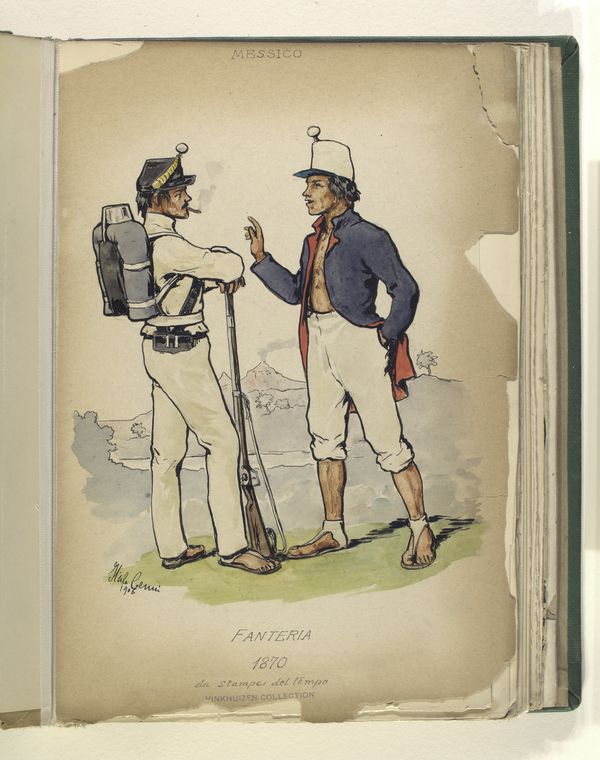 The warfare between the Apachean peoples and Euro-Americans has led to a stereotypical focus on certain aspects of Apachean cultures. These have often been distorted through misunderstanding of their cultures, as noted by anthropologist Keith Basso:
The warfare between the Apachean peoples and Euro-Americans has led to a stereotypical focus on certain aspects of Apachean cultures. These have often been distorted through misunderstanding of their cultures, as noted by anthropologist Keith Basso: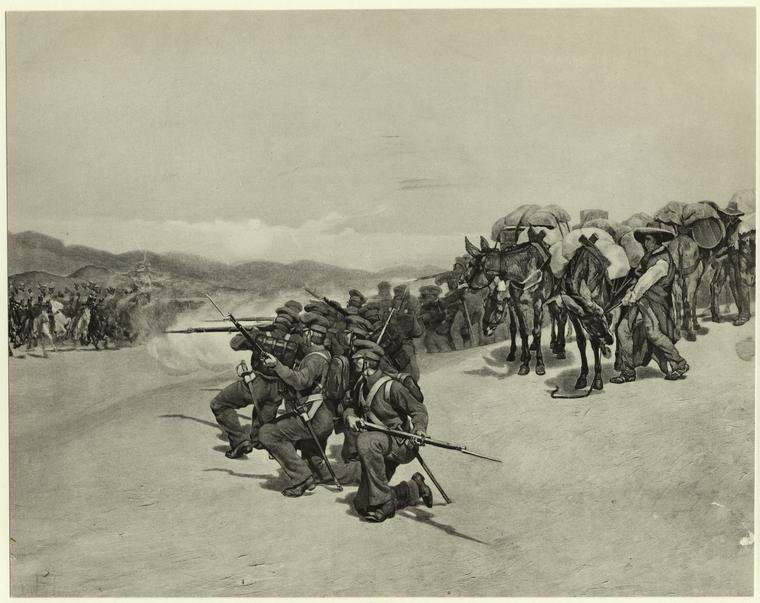
"Of the hundreds of peoples that lived and flourished in native North America, few have been so consistently misrepresented as the Apacheans of Arizona and New Mexico. Glorified by 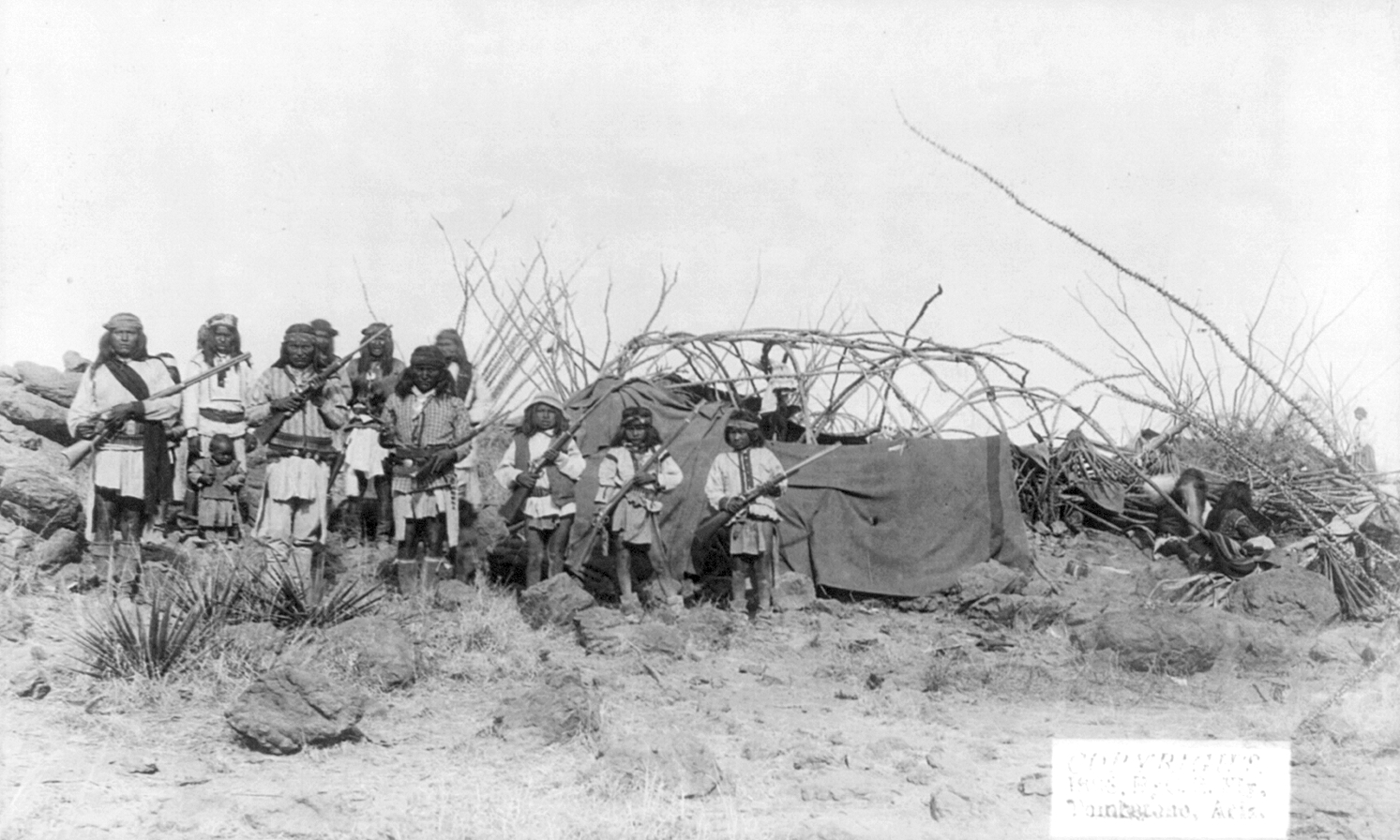 novelists, sensationalized by historians, and distorted beyond credulity by commercial film makers, the popular image of 'the Apache' — a brutish, terrifying semi-human bent upon
novelists, sensationalized by historians, and distorted beyond credulity by commercial film makers, the popular image of 'the Apache' — a brutish, terrifying semi-human bent upon 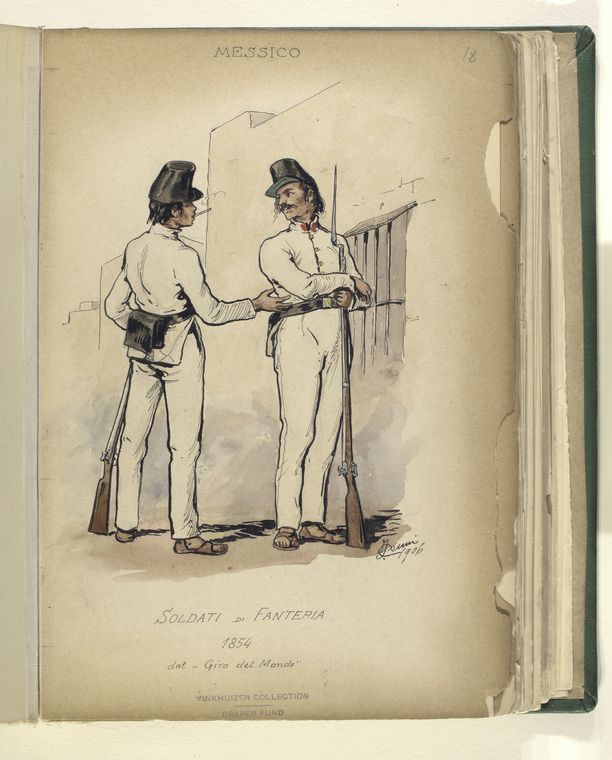 wanton death and destruction — is almost entirely a product of irresponsible caricature and exaggeration. Indeed, there can be little doubt that the Apache has been transformed from a native American into an American legend, the fanciful and fallacious creation of a non-Indian
wanton death and destruction — is almost entirely a product of irresponsible caricature and exaggeration. Indeed, there can be little doubt that the Apache has been transformed from a native American into an American legend, the fanciful and fallacious creation of a non-Indian 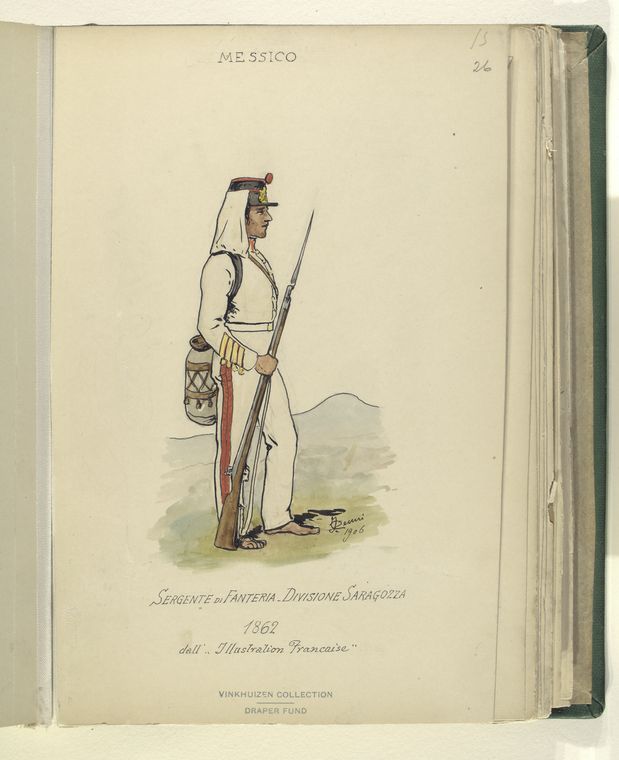 citizenry whose inability to recognize the massive treachery of ethnic and cultural stereotypes has been matched only by its willingness to sustain and inflate them."The Bear Valley Raid was an armed conflict that occurred in 1886 during Geronimo's War. In late April, a band of Chiricahua Apaches attacked settlements in Santa Cruz County, Arizona
citizenry whose inability to recognize the massive treachery of ethnic and cultural stereotypes has been matched only by its willingness to sustain and inflate them."The Bear Valley Raid was an armed conflict that occurred in 1886 during Geronimo's War. In late April, a band of Chiricahua Apaches attacked settlements in Santa Cruz County, Arizona over the course of two days. The Apaches raided four cattle ranches in or around Bear Valley, leaving four settlers dead, including a woman and her baby. They also captured a
over the course of two days. The Apaches raided four cattle ranches in or around Bear Valley, leaving four settlers dead, including a woman and her baby. They also captured a 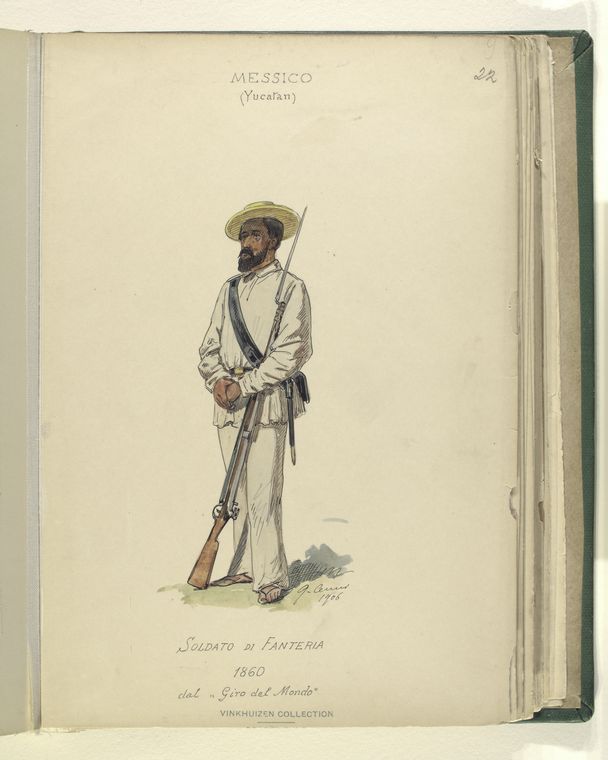
young girl, who was found dead several days after the event, and stole or destroyed a large amount of private property. When the United States Army learned of the attack, an 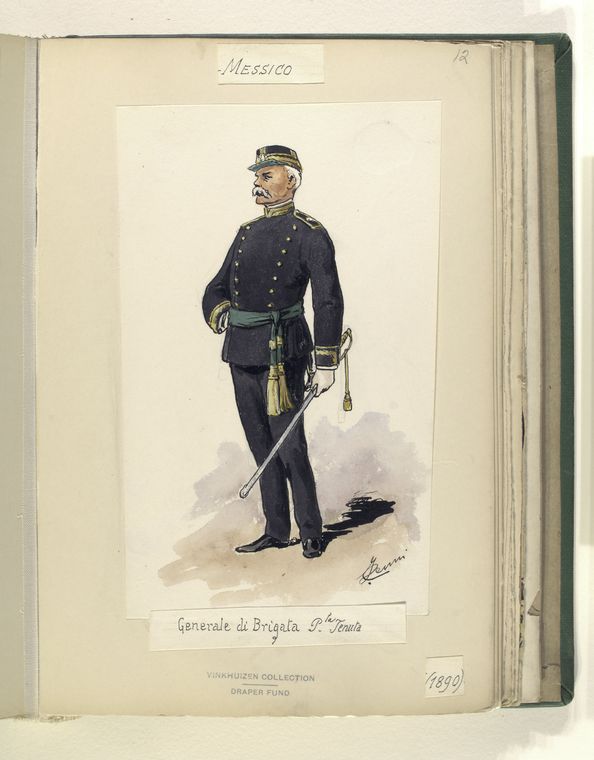
expedition was launched to pursue the hostiles. In May, two small skirmishes were fought 
just across the international border in Sonora, Mexico but both times the Apaches were able to escape capture
Hueco Tanks 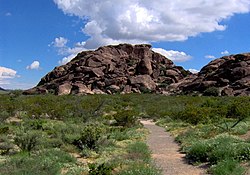
Some of the first Anglo-Americans to visit Hueco Tanks wrote about a large battle between Mexicans and Apaches in which the latter retreated into a cave. John Russell Bartlett, U.S. Boundary Commissioner, who visited Hueco Tanks in 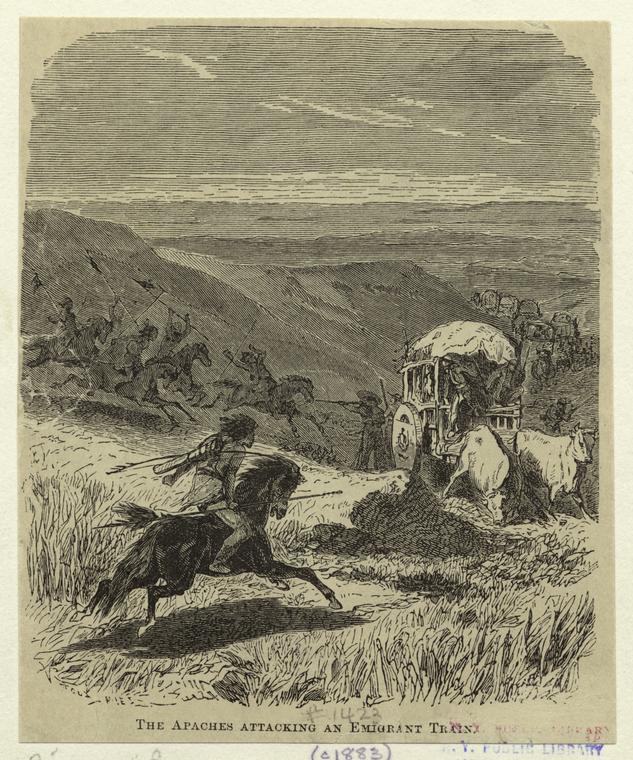 1850, noted that a major fight between Mexicans and Apaches had taken place at that location near a natural amphitheater. He stated that about 150 Apaches had been surprised by the sudden arrival of armed Mexicans and had retreated into cave, where they were confined for several days until they were all killed
1850, noted that a major fight between Mexicans and Apaches had taken place at that location near a natural amphitheater. He stated that about 150 Apaches had been surprised by the sudden arrival of armed Mexicans and had retreated into cave, where they were confined for several days until they were all killed 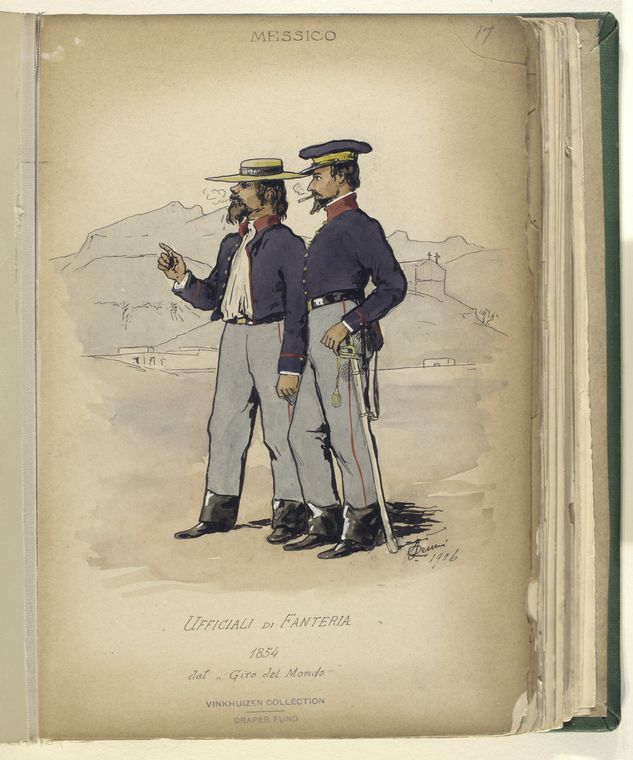
Brevet Captain John Pope, who conducted the Pacific Railroad survey, stopped at Hueco Tanks between February 16 and 19, 1854, wrote the following about an 
encounter between Apache and Mexican.About fourteen years ago these Arabs of New Mexico, the Apache, having made a desperate foray upon the Mexicans, 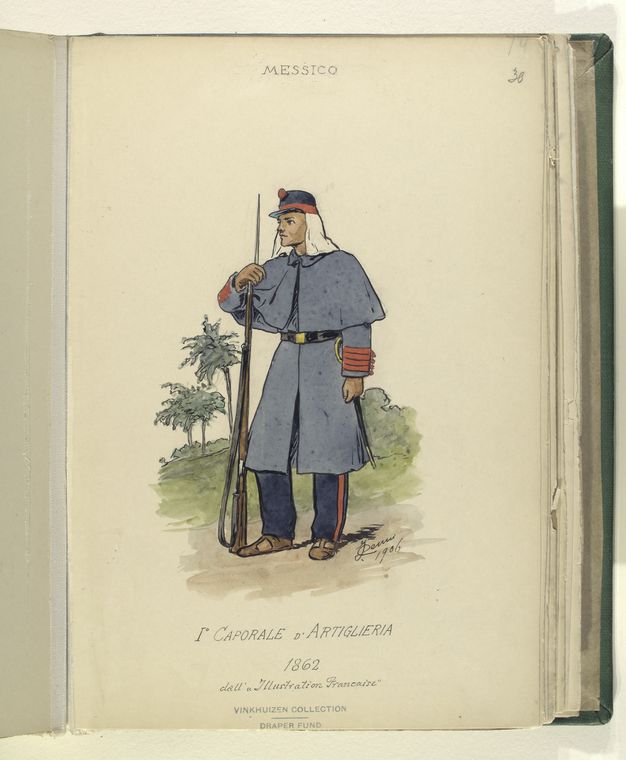 retreated with their plunder to these mountains. The Mexicans surprised and surrounded them, hemming them up in the rocky ravine forming the eastern tank. Here an engagement took place, in which the Indians were totally defeated and nearly
retreated with their plunder to these mountains. The Mexicans surprised and surrounded them, hemming them up in the rocky ravine forming the eastern tank. Here an engagement took place, in which the Indians were totally defeated and nearly 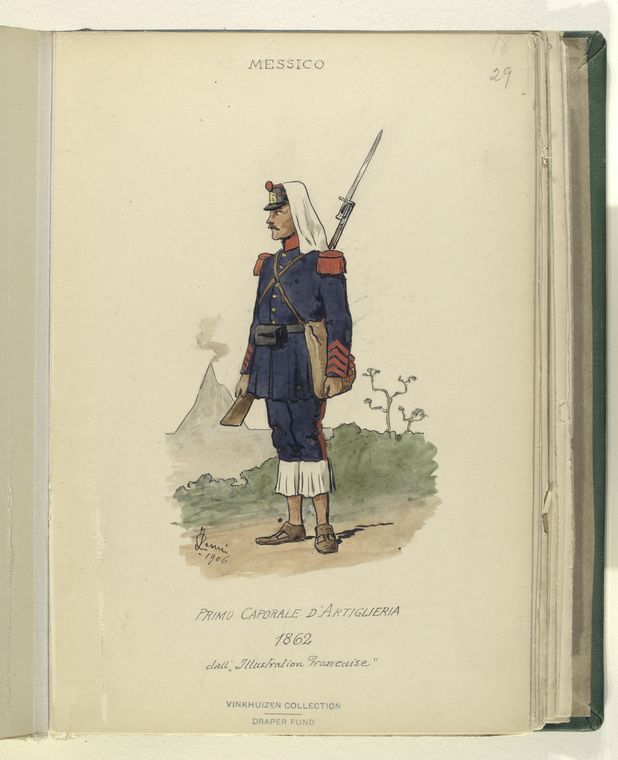 exterminated, only two or three escaping. It is said that upwards to one-hundred of them were killed” Hueco Tanks is an area of low mountains in El Paso County, Texas,
exterminated, only two or three escaping. It is said that upwards to one-hundred of them were killed” Hueco Tanks is an area of low mountains in El Paso County, Texas, 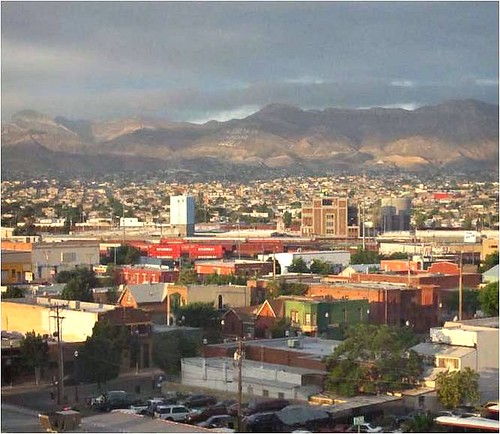 USA. It is located in a high-altitude desert basin between the Franklin Mountains
USA. It is located in a high-altitude desert basin between the Franklin Mountains  to the west and the Hueco Mountains to the east.
to the west and the Hueco Mountains to the east. Hueco is a Spanish word meaning hollows and refers to the many water-holding depressions in the boulders and rock faces throughout the region. Hueco Tanks is thus a redundant phrase. Due to the unique concentration of historic artifacts, plants and wildlife, the site is under protection of Texas law; it is an offense to alter or destroy them,
Hueco is a Spanish word meaning hollows and refers to the many water-holding depressions in the boulders and rock faces throughout the region. Hueco Tanks is thus a redundant phrase. Due to the unique concentration of historic artifacts, plants and wildlife, the site is under protection of Texas law; it is an offense to alter or destroy them,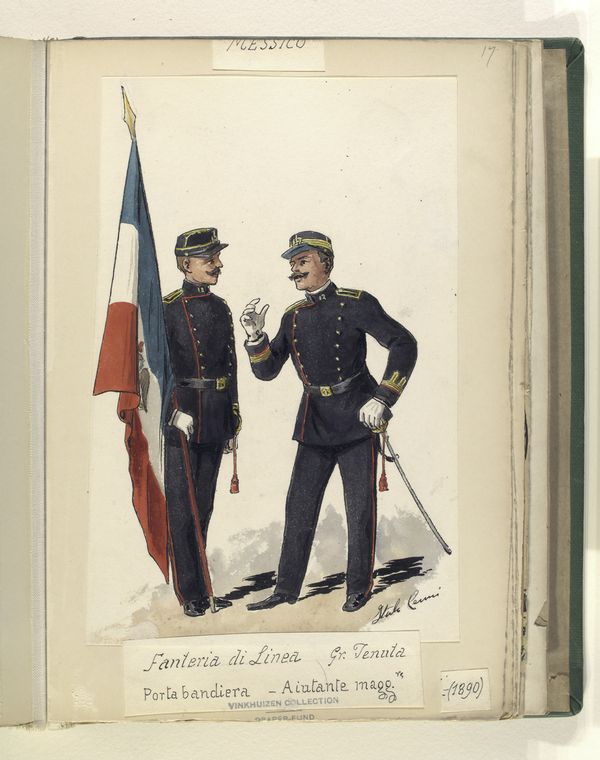 although before the park was formed, considerable changes were attempted during private ownership. At one time, the site was the Escontrias Ranch. It was a stagecoach stop for the Butterfield Stage,
although before the park was formed, considerable changes were attempted during private ownership. At one time, the site was the Escontrias Ranch. It was a stagecoach stop for the Butterfield Stage,  the names of Texas Rangers, US Cavalrymen, and the artifacts and paintings of Native Americans attest to its historic nature
the names of Texas Rangers, US Cavalrymen, and the artifacts and paintings of Native Americans attest to its historic nature
 Tarawa
Tarawa
 Rear Admiral Keijo Shibasak boasted that a million men couldn't take the island in a thousand
Rear Admiral Keijo Shibasak boasted that a million men couldn't take the island in a thousand .jpg) years. It was taken in four days. Tarawa was heavily defended, where Marines encountered
years. It was taken in four days. Tarawa was heavily defended, where Marines encountered  heavily losses on the beaches. Over 1,000 Americans were killed, which outraged people back
heavily losses on the beaches. Over 1,000 Americans were killed, which outraged people back in the states, because it was such a high loss for a seemingly insignificant tiny island. Poor
in the states, because it was such a high loss for a seemingly insignificant tiny island. Poor  intelligence is credited to the landing craft being stuck in the water and the beach, but at least
intelligence is credited to the landing craft being stuck in the water and the beach, but at least these lessons would be learned, and refined in future amphibious landing battles. Out of about
these lessons would be learned, and refined in future amphibious landing battles. Out of about 5,000 Japanese, only 146 were alive, mostly Korean slave laborers, the Japanese organized
5,000 Japanese, only 146 were alive, mostly Korean slave laborers, the Japanese organized their Betio defenses for an all-around, decisive struggle to keep United States forces from reaching the beaches .
their Betio defenses for an all-around, decisive struggle to keep United States forces from reaching the beaches . ![[Figure 18. Betio Island]](http://www.lonesentry.com/articles/jp-betio-island/betio-island-map-tarawa.jpg) A map, drawn to scale, is designed to show an
A map, drawn to scale, is designed to show an 
 Rear Admiral Keijo Shibasak boasted that a million men couldn't take the island in a thousand
Rear Admiral Keijo Shibasak boasted that a million men couldn't take the island in a thousand .jpg) years. It was taken in four days. Tarawa was heavily defended, where Marines encountered
years. It was taken in four days. Tarawa was heavily defended, where Marines encountered  heavily losses on the beaches. Over 1,000 Americans were killed, which outraged people back
heavily losses on the beaches. Over 1,000 Americans were killed, which outraged people back in the states, because it was such a high loss for a seemingly insignificant tiny island. Poor
in the states, because it was such a high loss for a seemingly insignificant tiny island. Poor  intelligence is credited to the landing craft being stuck in the water and the beach, but at least
intelligence is credited to the landing craft being stuck in the water and the beach, but at least these lessons would be learned, and refined in future amphibious landing battles. Out of about
these lessons would be learned, and refined in future amphibious landing battles. Out of about 5,000 Japanese, only 146 were alive, mostly Korean slave laborers, the Japanese organized
5,000 Japanese, only 146 were alive, mostly Korean slave laborers, the Japanese organized their Betio defenses for an all-around, decisive struggle to keep United States forces from reaching the beaches .
their Betio defenses for an all-around, decisive struggle to keep United States forces from reaching the beaches . ![[Figure 18. Betio Island]](http://www.lonesentry.com/articles/jp-betio-island/betio-island-map-tarawa.jpg) A map, drawn to scale, is designed to show an
A map, drawn to scale, is designed to show an 
 types of obstacles, and mines. The weapons included grenades, mortars, rifles, light and
types of obstacles, and mines. The weapons included grenades, mortars, rifles, light and heavy machine guns,
heavy machine guns, 
 ,
,  guns,
guns, 
 types of obstacles, and mines. The weapons included grenades, mortars, rifles, light and
types of obstacles, and mines. The weapons included grenades, mortars, rifles, light and heavy machine guns,
heavy machine guns, 
 ,
,  guns,
guns, 
 about halfway around the island on
about halfway around the island on the coral reef; an antiboat barricade, made of coconut-palm logs:
the coral reef; an antiboat barricade, made of coconut-palm logs: double-apron barbed wire; a perimeter barricade, constructed chiefly of coconut-palm logs;
double-apron barbed wire; a perimeter barricade, constructed chiefly of coconut-palm logs; and antitank ditches, dug a short distance back of the perimeter barricade.
and antitank ditches, dug a short distance back of the perimeter barricade. about halfway around the island on
about halfway around the island on the coral reef; an antiboat barricade, made of coconut-palm logs:
the coral reef; an antiboat barricade, made of coconut-palm logs: double-apron barbed wire; a perimeter barricade, constructed chiefly of coconut-palm logs;
double-apron barbed wire; a perimeter barricade, constructed chiefly of coconut-palm logs; and antitank ditches, dug a short distance back of the perimeter barricade.
and antitank ditches, dug a short distance back of the perimeter barricade. concrete obstacles—and on the beaches.
concrete obstacles—and on the beaches. concrete obstacles—and on the beaches.
concrete obstacles—and on the beaches.
 hey fuck you Mr Poltician but I've got a life to lead, beers to drink, women to meet and the whole ca-bang, you go first I'll follow up. That way you'll never have to go to war. Most politicians are in B.Company, b here when you go and be here when you get back , if you get back. Nevertheless I like the history of war , everything is in it. This is about the Marines.
hey fuck you Mr Poltician but I've got a life to lead, beers to drink, women to meet and the whole ca-bang, you go first I'll follow up. That way you'll never have to go to war. Most politicians are in B.Company, b here when you go and be here when you get back , if you get back. Nevertheless I like the history of war , everything is in it. This is about the Marines.![[linked image]](http://i646.photobucket.com/albums/uu181/hurricanebuild/S7303180.jpg)
 Marines garrisoned the captured Henderson Field,
Marines garrisoned the captured Henderson Field, 
 , currently used by a small coconut plantation. Although the convoy attracted American attention as early as 28 Nov, American intelligence saw nothing there based on aerial photographs besides a few scattered
, currently used by a small coconut plantation. Although the convoy attracted American attention as early as 28 Nov, American intelligence saw nothing there based on aerial photographs besides a few scattered  small buildings. Finally, on 3 Dec, a sharp-eyed American intelligence expert saw something: the Japanese were building an airfield underneath the neat rows of coconut trees. Whenever a tree needed to be
small buildings. Finally, on 3 Dec, a sharp-eyed American intelligence expert saw something: the Japanese were building an airfield underneath the neat rows of coconut trees. Whenever a tree needed to be 

 bombardment force consisted of three light cruisers and two destroyers under the command of Rear Admiral Walden Ainsworth; the support group behind them had three light cruisers, one heavy cruiser, and three
bombardment force consisted of three light cruisers and two destroyers under the command of Rear Admiral Walden Ainsworth; the support group behind them had three light cruisers, one heavy cruiser, and three  destroyers under the command of Rear Admiral Mahlon Tisdale. Shortly after 0100 in the early morning of 5 Jan, the bombardment commenced. For the next 50 minutes they had deposited nearly 3,000 rounds of 6-in shells and 1,400 rounds of 5-in shells on the Japanese airfield. The next morning, American
destroyers under the command of Rear Admiral Mahlon Tisdale. Shortly after 0100 in the early morning of 5 Jan, the bombardment commenced. For the next 50 minutes they had deposited nearly 3,000 rounds of 6-in shells and 1,400 rounds of 5-in shells on the Japanese airfield. The next morning, American  reconnaissance aircraft visited Munda Field and reported a heavily damaged airfield and no sign of enemy anti-aircraft fire. A retaliatory strike by air came as the ships were steaming home, but it only damaged one of the
reconnaissance aircraft visited Munda Field and reported a heavily damaged airfield and no sign of enemy anti-aircraft fire. A retaliatory strike by air came as the ships were steaming home, but it only damaged one of the  turrets atop the New Zealand destroyer Achilles that sailed with the support group.
turrets atop the New Zealand destroyer Achilles that sailed with the support group.




 The first Apache raids on Sonora
The first Apache raids on Sonora 

 Coloradas signed a peace treaty with the nation, respecting them as conquerors of the Mexicans' land. An uneasy peace (a centuries-old tradition) between the Apache and the new citizens of the United States held until the 1850s. An influx of gold miners into the Santa Rita Mountains
Coloradas signed a peace treaty with the nation, respecting them as conquerors of the Mexicans' land. An uneasy peace (a centuries-old tradition) between the Apache and the new citizens of the United States held until the 1850s. An influx of gold miners into the Santa Rita Mountains

 permission, to raid, return to their homeland to forage, or to simply get away. The military usually had forts nearby. Their job was keeping the various bands on the reservations by finding and returning those who left. The reservation policies of the United States produced conflict and war with the various Apache bands who left the reservations for almost another quarter century.
permission, to raid, return to their homeland to forage, or to simply get away. The military usually had forts nearby. Their job was keeping the various bands on the reservations by finding and returning those who left. The reservation policies of the United States produced conflict and war with the various Apache bands who left the reservations for almost another quarter century.


















